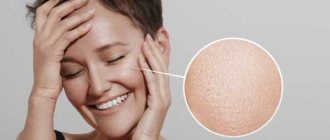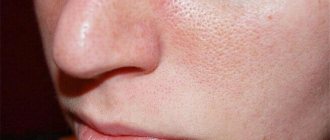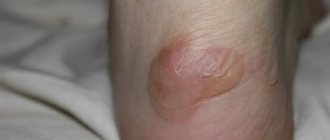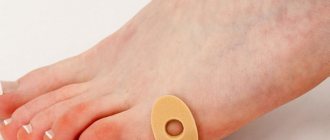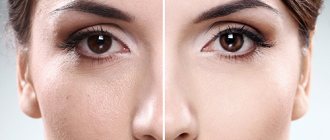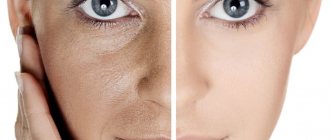The article was prepared by a specialist for informational purposes only. We urge you not to self-medicate. When the first symptoms appear, consult a doctor.
In just one day, our body secretes about 500 ml of water through the skin mixed with salt, urea, sebum, carbon dioxide and lactic acid. And this is only from the inside, and from the outside we are exposed to city dust and dirt, which is mixed with cosmetics. The face has many small pores located close to each other, in addition, it is an open part of the body - therefore, the skin of the face is constantly chapped, exposed to high and low temperatures, and irradiated by ultraviolet radiation. That is why, to preserve beauty, it is very important to provide your face with complete care and cleansing.
Cellular regeneration processes are constantly occurring in our skin, which are accompanied by the death of the outdated upper layer of the epithelium. High-quality facial cleansing involves not only removing impurities, but also exfoliating dead particles that slow down renewal and prevent us from seeing our attractive reflection in the mirror: fresh blush, healthy complexion, elastic and smooth skin. Skin of any type and any age needs regular cleansing, but for this it is not at all necessary to spend a lot of money on cosmetics.
Today we will tell you all about effective facial cleansing at home using natural and affordable ingredients. You will learn how to get rid of blackheads on your nose and prevent their appearance, which skin care products are suitable for your skin, and which ones are not recommended to use. The best recipes for cleansing face masks, homemade scrubs and peelings are waiting for you on this page - try it and see for yourself!
Cleansing normal facial skin
Let's start our conversation with the rarest skin type - normal. Alas, in modern realities, absolutely healthy skin with a smoothly functioning self-regulation mechanism is rare, mainly in children and very young girls.
This is interesting: Only about 8% of women aged 30-45 can boast of normal facial skin. Moreover, 75% of them practically do not use decorative cosmetics (they began to tint their eyelashes and lips after 20 years), wash themselves with baby soap, and limit their daily skin care to a light day cream.
You have normal facial skin if:
- After washing your face with soap or plain water, you never feel tightness;
- No greasy shine appears on the forehead, nose and chin 2-3 hours after washing; after waking up, your face does not look greasy;
- The skin never peels off or becomes stained by frost or heat;
- The pores are not enlarged, there are no pustular rashes;
- The face gratefully accepts any creams; they are quickly absorbed and do not cause irritation.
What people with normal skin should not do:
- Indulge in skincare products
. If you have normal skin, the main task is to maintain its status for as long as possible, that is, adhere to the principle of non-intervention. Most women believe that expensive, high-quality creams and masks can only bring benefits, because there can never be too much of a good thing. This is an erroneous opinion - with the help of strong cosmetics, especially those chosen incorrectly, you can disrupt the natural balance of the skin and ruin it forever;
- Neglecting facial cleansing
. Normal skin gives its owner a minimum of trouble and does not “revenge” sleep without makeup remover with redness and pimples. But this is for the time being. If you often go to bed unwashed and do not carry out cleansing procedures at least once every 2 weeks, very soon the healthy complexion will be replaced by grayness, peeling and black spots will appear on the nose.
Care for normal skin
It is very simple to provide normal skin with high-quality care, and it does not require large financial investments. The best means for cleansing the face in this case is regular baby soap (you can use cosmetic cream soap), or foam or gel wash. Particular attention should be paid to water quality. What makes it tough is the increased content of magnesium and calcium salts, which, when combined with soap and sebum, form insoluble compounds that are practically not washed off with water and leave a dense, harmful film on the face. Constantly washing your face with hard water can ruin normal skin.
This is important : Test the quality of the tap water in your home to determine if it is suitable for washing your face. To do this, pour water into a glass glass, put a teaspoon in there and leave for two weeks. If after this time a white circle forms on the inner surface of the glass along the edge of the water, and the spoon becomes rough, then the water is too hard.
There are two ways to solve the problem of hard water at home: boiling or freezing. Melt water is much preferable to boiled water, and it’s easier to prepare it - take the container out of the freezer in the evening, and the next morning soft, cool water is ready. You need to wash your face not only in the morning, but also in the evening, regardless of whether you use decorative cosmetics. During the day, a lot of dust and carbon monoxide accumulate on the surface of the skin, especially if you live in a big city and are often outdoors.
After washing your face in the morning, it is enough to moisturize your normal skin with a light day cream with a UV filter. In the evening before going to bed, you can apply a night nourishing cream, but for girls under 30 years old this is not at all necessary. You should start using special creams for the area around the eyes after 35 years. Owners of normal skin are recommended to use cleansing face masks no more than twice a month, the same applies to scrubs for deep cleansing of the skin and steam baths. Light peels can be used every week, but only if necessary (blackheads on the nose). The only product that can complement the daily care of normal skin without fear of disturbing its natural balance is an alcohol-free tonic based on natural extracts.
How to save the result
On the day when the pores have been cleaned, you should not use aggressive products. It is advisable to purchase milk or foam.
Do not injure your skin with scrubs. It is highly undesirable to touch your face with your hands; it is better to use nourishing masks. They will restore and moisturize the skin. It is good to use antiseptic solutions, wipe your face with a decoction of sage and calendula.
After cleansing, blood circulation improves and metabolic processes are activated. This is the most favorable time for skin care.
Masks made from olive oil with protein, parsley juice and sour cream will have a positive effect. You are allowed to put potatoes, melon, watermelon, and cucumber on your face.
Cleansing oily and combination skin
How to determine if you have oily skin type? It’s very simple: wash your face thoroughly with water at room temperature and baby soap (with soap, special cleansers are not suitable), pat dry with a clean towel and wait three hours, while doing your usual activities and being in a cool room. After the allotted time, place a thin piece of paper on your nose - if an oily trace remains on it, it means you have oily skin. However, do not rush to get upset: those with oily skin develop wrinkles on their faces on average 5-8 years later than women with dry skin. And with proper care and proper cleansing of the face, such skin can look quite decent.
This is interesting: About 30% of girls aged 16-20 have oily skin, and only about 10% of adult women. Meanwhile, the most common skin type is combination, when the T-zone is oily and the cheeks are dry. Approximately 70% of women aged 30-45 have this type of skin.
Oily facial skin is caused by increased activity of the sebaceous glands. This is either a hereditary trait or an acquired defect caused by hormones. It is not for nothing that “peak fat content” occurs during puberty and pregnancy (and sometimes menopause). If problems with oily skin become catastrophic, it is necessary to undergo examination by a dermatologist and endocrinologist, since it is impossible to cleanse oily facial skin at home with cosmetic products alone.
What people with oily skin should not do:
- Wash with hot water
. In an attempt to achieve cleanliness and eliminate the treacherous shine, many girls thoroughly wash their face with soap and hot water, because high temperature helps to dissolve sebum. There is no need to do this under any circumstances - the sebaceous glands will immediately begin to intensively compensate for the dryness, and within an hour after such a procedure the skin will shine again;
- Wipe your face with alcohol lotions
. It would seem that such cleansing, tightening and disinfectants were invented specifically for oily, acne-prone skin. However, if you apply them not precisely to the source of inflammation, but to the entire surface of the face, and even do this daily, you can achieve the exact opposite effect, for the same reason as described in point 1. The more we dry out the skin, the more active they work sebaceous glands.
Care for oily skin
You shouldn’t wash your face too often; it’s enough to do it three times a day: in the morning after waking up, in the evening after coming home from work/school (full make-up removal) and at night before bed. You need to wash off your makeup in the bathroom; makeup remover milk is inappropriate here. Any soap is absolutely not suitable for washing oily facial skin - as we mentioned above, sebum reacts with hardness salts contained in water, and an irritating film forms on the face. The best choice is gels and foams for washing with a pH level of no higher than 4.5, containing special components for regulating the activity of the sebaceous glands, narrowing pores and gently disinfecting acne (for example, chamomile, calendula or tea tree extract).
Light daytime moisturizing cream-gels that are quickly absorbed are ideal as care products for oily skin. Just because your skin is oily doesn't mean it doesn't need regular moisturizing. At night, you should not apply heavy nourishing creams to your face, especially oil-based ones. Until the age of 30, those with oily skin should not use night cream at all - it is better to make a nourishing mask from natural products before going to bed. Alcohol-free toners will only benefit oily skin, especially those containing lemon or cucumber juice.
Cleansing oily facial skin at home should be carried out according to the following schedule:
- 2 times a month – full-scale procedure with a steam bath;
- Once a week – scrub, peeling or mask for deep cleansing of the skin;
- 2-3 times a week – light peelings and scrubs.
This is interesting: How does a scrub differ from peeling? The scrub contains small polishing particles that provide mechanical removal of the keratinized top layer of skin and cleansing impurities from the pores. Peeling contains components that dissolve sebum (for example, fruit acids), that is, it provides chemical cleansing of the face.
If you have oily skin prone to inflammation and acne, it is preferable to use homemade cleansing masks and peels rather than scrubs. Peeling removes dirt and excess sebum more gently, and a properly selected mask soothes the sebaceous glands. As for scrubs, especially those containing large and sharp polishing particles (ground nut shells, apricot kernels), they injure inflamed skin. Subsequently, microtraumas easily become infected, and since sebum is a free environment for the proliferation of pyogenic bacteria, new rashes appear on the face.
Is it possible to squeeze out pimples and blackheads on the face? Definitely yes, but only if they are already ripe and come out easily. In addition, cleansing oily facial skin mechanically is possible only after careful preparation (steaming and disinfection). If you squeeze a pimple with dirty hands, the wound will almost certainly become inflamed. And the longer such wounds take to heal, and the more often they are reinfected and picked apart, the more obvious the scars remain in their place. Getting rid of acne scars is very difficult.
We need to start with care
An unkempt face with huge pores does not make a girl attractive. Therefore, it is important to pay attention to care. Cleansing, mechanical peeling, toning and moisturizing should be carried out according to skin type. If you add products based on fruit acids, charcoal, clay, and professional cleansing masks to your home care, you will be able to delay visiting a cosmetologist.
Cleansing dry and sensitive facial skin
You can tell if you have dry skin by the following signs:
- Washing with plain water causes a feeling of tightness, while washing with soap causes itching and burning;
- The skin often peels, especially around the nose and cheeks;
- Ice water and cold wind cause red spots to appear on the face;
- The forehead, nose and chin sweat in the heat, but do not shine with a greasy sheen;
- The creams are instantly absorbed (“like dry soil”), and after a few hours discomfort reappears.
This is interesting: About 25% of women aged 30-45 years and more than half of all representatives of the fair sex who have crossed the forty-five year mark have dry facial skin. Dryness is explained by a gradual decrease in the activity of the sebaceous glands, the fading of the regeneration function of the skin and shifts in hormonal balance.
Despite the lack of moisture and increased sensitivity, thin and dry skin also needs regular cleansing. After all, if you do not help skin cells get rid of keratinized particles, the renewal of the epithelium will significantly slow down. However, cleansing dry facial skin requires a very delicate approach, and it must be combined with the use of moisturizing and nourishing creams and masks. You will find the best recipes for gentle cleansing face masks, enriched with natural beneficial ingredients, further in our article.
What people with dry skin should not do:
- Leaving cosmetics on your face that are not intended for this purpose
. We are talking about numerous foams, gels and creams for washing. Since they moisturize well and have a pleasant consistency, some girls deliberately do not wash them off completely, hoping to avoid tightness and maintain a feeling of comfort. This should not be done - dust and dirt will quickly stick to the skin treated in this way, the pores will become clogged, and irritation will appear. Cleansers should be rinsed from the face 8-10 times with warm water;
- Rub your face with ice cubes
. This is a very popular and effective toning procedure, however, you should not resort to it if you have dry and sensitive skin. The burning cold will cause red spots to appear on your face; in addition, if the subcutaneous capillaries are close, they may burst. Contrast and ice washes are also contraindicated for girls with dry skin;
- Apply creams using smearing movements
. To ensure that the product is well absorbed and does not cause irritation, it must be lightly “pounded” into the skin with your fingertips. This advice is relevant for those with any skin type, but dry and sensitive skin – especially since it is prone to the early appearance of wrinkles. The cream must be distributed following the correct trajectories and avoiding stretching the skin.
Care for dry and sensitive skin
There is currently a wide selection of cleansing emulsions on the market that can be used instead of traditional morning routines. The emulsion is a neutral mixture of a fat base and water (fat content 25-50%). When applied to the face, this product simultaneously cleanses thin, dry skin and impregnates it with oils, like tissue paper. However, make sure that you choose the right cleansing emulsion and do not confuse it with regular makeup remover milk.
If you prefer to wash your face with water and delicate foam, take care of the quality of the water. Hard water has the most detrimental effect on dry facial skin, so it is better to prepare melted water or purchase micellar water. Frequent washing is harmful to dry skin as it causes flaking. It is enough to wash your face twice a day, and after each procedure apply a cream to your face: in the morning, a daytime moisturizer with a good UV filter, in the evening, a nourishing and rejuvenating one (after 30 years). Dry and thin skin around the eyes needs a separate care product from about 25 years of age.
It is recommended to cleanse dry facial skin at home 1-2 times a month: a steam bath, then a soft scrub and finally a soothing mask. If you choose between a scrub and peeling, then a scrub is preferable for dry skin, since only with its help can you eliminate visible peeling that prevents you from applying makeup evenly. Facial peels, especially aggressive ones (for example, with salicylic acid) irritate sensitive skin and aggravate dryness. The same applies to alcohol lotions.
Homemade skin cleansing treatments
If you want to have a healthy complexion and smooth, elastic skin, make it a rule to have a “cleansing day” at least once a month. Do not plan any activities outside the home for the evening of this day, since you cannot go outside after a home skin cleansing procedure: firstly, you can catch a cold, and secondly, dirt will immediately get into the open pores.
Complete skin cleansing at home includes several steps:
- Steaming the face over a bath;
- Removal of comedones (if any);
- Exfoliation of the keratinized top layer of skin;
- Face mask (cleansing, moisturizing, nourishing, tightening pores - the choice depends on your facial skin type).
To prepare a steam bath, you will need a medicinal herb from a pharmacy:
- For dry skin
– oregano, thyme, linden;
- For oily skin
– coltsfoot, nettle, mint;
- For acne-prone skin
– calendula, St. John’s wort, yarrow;
- For normal skin
– chamomile, lavender, string.
Pour boiling water over one tablespoon of the selected herb, cover the container with a plate and wait 5 minutes. When the herb is brewed and the boiling water has cooled a little, sit over the bath, tilt your face and cover yourself with a terry towel. By the way, if you don’t want to bother with herbs, you can use essential oils instead - just a few drops with your favorite scent of rose, bergamot, orange, patchouli, ylang-ylang or tea tree.
It is best to steam the skin for at least 15 minutes, then the sebum will completely dissolve. After the allotted time, do not rush to remove your head from under the towel - the temperature difference will immediately close the pores. Instead, roll up a hot towel, cover your face, and lie there until it cools down. Then blot the steamed skin and sit in front of a magnifying tabletop mirror.
If you want to get rid of blackheads on your nose, now is the time to do it. Wrap your fingers in a sterile bandage or napkin moistened with hydrogen peroxide, and with light pressure in counter movements, clean the pores around the nose, forehead and chin from comedones and excess sebum.
This is important: Do not squeeze out pimples and blackheads with long nails. Firstly, this does not work well, since the area of the tip of the nail is very small, and successful extrusion is ensured by crushing the entire thickness of the skin at the desired angle, and not by applying pressure to one point. Secondly, it is fraught with injury.
It is best to perform mechanical cleansing of the face using very short nails or just fingertips. There are special metal devices in the form of loops, but reviews about them are very controversial - some like to remove pimples and comedones with their help, others do not. Do home facial cleansing in the way that is most convenient for you, the main thing is to maintain sterility and do not try to squeeze out an intractable pimple at any cost. This will only damage the skin, leaving an unsightly red spot, and the pimple will become more inflamed and will take longer to mature.
What causes clogged pores?
Clogged pores are the result of dead skin cells becoming trapped in your skin instead of being released into the environment. Pores are tiny openings in the skin that secrete oil and sweat. When pores are clogged it can lead to blackheads and pimples. You can tell if your pores are clogged if you notice blackheads or an overall dullness in your skin color.
Environmental factors also contribute to clogged pores.
These factors include:
- toxins in the air
- non-comedogenic makeup
- the oil from your hands is transferred when you touch your face
- sweat
Products for cleansing skin from blackheads
Comedones, or blackheads, are small plugs of sebum, the top of which is contaminated with street dust and cosmetic residues, which is why they stand out so unattractively against the background of the face. It is necessary to remove comedones, and not only because they spoil the appearance. Old sebaceous plugs tend to increase in volume over time and stretch the pores. And when you finally remove the large comedone, a real “lunar crater” will remain in its place. To prevent this, cleanse your face regularly.
This is important: It is useless to apply cleansing masks and anti-blackhead products to unsteamed skin. All kinds of patches and films that have to be torn off from the face remove the top layer of the epidermis, and the sebaceous plugs continue to sit in their places. Assurances that comedones will “stick” to the patch and remain on its inner surface are pure myth.
Best home remedies for blackheads on nose:
- Protein mask
– beat the white of one egg into a stiff foam, apply it to the area covered with comedones, and place a paper napkin folded 2-3 times on top. When it dries a little, apply a second layer of protein foam and wait until it dries completely. The napkin should become hard, then you can easily and carefully remove it from your face. Protein perfectly pulls sebum out of steamed pores, since it is very sticky and shrinks greatly when it dries;
- Black mask for blackheads
– crush 1 tablet of activated carbon, add half a teaspoon of gelatin to it and steam this mixture with 1 tablespoon of hot milk. After a few minutes, when the gelatin has dispersed and the mass has cooled a little, apply it to the steamed nose and the area around it. After 20-30 minutes, the mask will dry completely and look like a shiny film, then you can remove it. The principle of operation of this remedy for blackheads is the same - drawing out and adsorption of impurities during the drying process.
How to get rid of blackheads using lightening?
If your nose is covered with small black dots that just don’t want to be squeezed out, don’t despair.
You can get rid of them by bleaching:
- Salt, soda and baby soap
– Add 1 teaspoon each of salt and baking soda to the soap solution. Place the resulting mixture on a cotton pad, toothbrush or a special facial cleansing brush and massage the skin of your nose for 3-5 minutes, then rinse thoroughly. Repeat these procedures 2-3 times a week, and within a month the small comedones will completely lose their black “lids” and will no longer be conspicuous;
- Lemon juice and hydrogen peroxide
– mix one teaspoon of the above ingredients with a tablespoon of water. Soak a cotton pad generously and wipe the area covered with blackheads every evening for two weeks. During this time, the comedones will discolor, but keep in mind that this remedy for blackheads is not suitable for girls with very dry and sensitive skin.
The best cleansing face masks
We bring to your attention recipes for cleansing masks that are suitable for any skin type and at the same time saturate your face with useful substances:
- Kefir cleansing mask
– heat a quarter cup of 3.2% kefir in a water bath, soak a piece of clean gauze in it and apply it to your face for 10-15 minutes. The acids contained in kefir gently dissolve sebum and restore a healthy pH level if the skin is too oily and its environment is alkaline;
- Rice cleansing mask
- a popular Japanese recipe for cleansing facial skin at home. Thoroughly rinse half a glass of round rice with running water, then pour three times the volume of warm boiled water over it and leave it overnight. In the morning, drain the excess liquid, mash the rice to a paste and apply to clean facial skin for 15-20 minutes;
- Cucumber Protein Cleansing Mask
– peel one small fresh cucumber and grate it on a fine grater. Beat the white of one egg into a stiff foam and mix with grated cucumber. Apply to face and leave until dry, then rinse with cool water. This mask is especially suitable for those with enlarged pores;
- Yeast Cleansing Mask
– recommended for dry and mature skin, perfectly saturates with vitamins. Mash a small cube of fresh baker's yeast in warm milk and apply the resulting mass to the skin of the face and décolleté. Leave for 15-20 minutes and rinse with water at room temperature;
- Potato cleansing mask
– optimal for oily skin, it removes excess sebum well and reduces its secretion. Grate raw potatoes on a fine grater and apply the resulting mixture to your face, paying special attention to the T-zone. Leave on for 10 minutes and rinse with cool water;
- Cleansing mask made from cosmetic clay
- a universal option, since you can choose clay for your skin type: red - for dry, pink - for mixed and normal, blue, green and white - for oily and problem skin. The clay is diluted with warm water to a comfortable consistency and applied to the entire face, avoiding the area around the eyes, for 10-15 minutes, and then rinsed off thoroughly;
- Herbal cleansing mask
– has additional healing properties, depending on the choice of medicinal plant. Oily facial skin can be soothed and disinfected with calendula, yarrow, St. John's wort or sage. For those with dry skin, linden blossom, rosehip and thyme are perfect. Almost any herb is good for normal skin; opt for the classic options: chamomile, mint, lemon balm. A small amount of raw material needs to be crushed with a coffee grinder, added a little warm water until a homogeneous paste is obtained and applied to the face for 15-20 minutes, and before rinsing off, lightly massage the skin - you get a scrub effect.
Alternative options
The described at-home cleaning is not suitable for everyone. It is contraindicated for people with serious skin diseases (psoriasis, eczema), chronic diseases in the acute stage, and women during their menstrual periods.
Therefore, there are other ways to cleanse. For example, the use of special cleaning patches, which are sold in household chemical stores or pharmacies. They contain substances that adsorb and “pull out” the contents of the gland. However, their effect is insignificant; they are more suitable for people with normal or dry, unproblematic skin.
Cleansing lotions and creams also help.
Another option is folk remedies as cleansing masks at home. They have a significant effect, but cannot compare with mechanical cleaning.
Scrubs for deep skin cleansing
Try homemade scrub recipes based on natural ingredients - it's simple, healthy and economical:
- Semolina scrub
– the particles of semolina are quite small and not sharp, which allows you to use semolina as a base for all kinds of homemade scrubs. The easiest option is to mix semolina with heavy cream or sour cream;
- Oatmeal scrub
– in this case, the oatmeal will first have to be ground with a coffee grinder. Oatmeal-based scrubs are very gentle and ideal for sensitive facial skin. You can mix ground oatmeal with sour cream, whipped egg white or natural yogurt, but you need to start the procedure immediately, since the grain particles swell quickly;
- Coffee scrub
– natural ground coffee is also perfect as a base for homemade scrubs. Particularly good options: coffee + banana pulp and coffee + full-fat cottage cheese. These products are very easy to use and at the same time beneficial for facial skin of any type;
- Sugar scrub
– preferable for cleansing dry facial skin. Fine sugar is mixed with sour cream, cottage cheese, avocado or banana pulp. Such compositions must be used immediately after preparation, since sugar melts quickly;
- Honey-salt scrub
– is more suitable for those with oily facial skin, but if you use it on the body after a bath, then it is simply a fairy tale for any skin type. A facial scrub is prepared from a tablespoon of honey and half a teaspoon of finely ground salt, and for the body choose coarser table salt or better sea salt, approximately maintaining the above proportions;
- Egg shell scrub
– best copes with the problem of flaky facial skin. The shells of several eggs must be ground very thoroughly with a coffee grinder, literally “into dust.” Then we will get small, dense particles that perfectly remove the stratum corneum of the skin without injuring it. You can mix ground shells with any of the above bases, but best of all – with full-fat cottage cheese and cream;
- Almond-orange scrub
– the most fragrant and pleasant to use homemade scrub recipe. Grind a handful of almonds with a coffee grinder to a crumb size of 1-2 mm in diameter, then add a little freshly squeezed orange juice (or preferably lemon juice if your skin is very oily) and easily massage your face with this mixture for a few minutes.
It is recommended to use natural scrubs for deep cleansing of the skin, regardless of its type, more often than 1-2 times a week. Take care of yourself and be beautiful!
Author of the article:
Kuzmina Vera Valerievna |
Endocrinologist, nutritionist Education: Diploma of the Russian State Medical University named after. N.I. Pirogov, specialty “General Medicine” (2004). Residency at the Moscow State Medical and Dental University, diploma in Endocrinology (2006). Our authors
